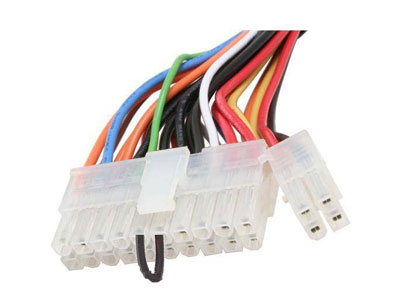Key Takeaway
To reset a power supply, first, turn off the power supply unit (PSU). Then, unplug the power cable from the PSU and wait for 15 seconds. This pause allows any residual charge to dissipate. After 15 seconds, plug the power cable back into the PSU. Finally, turn the power supply unit back on. This simple process can resolve many minor issues with the power supply. Ensure all connections are secure before turning the system back on to prevent further problems.
Identifying the Need for Reset
Resetting a power supply is necessary when dealing with issues like overloads, short circuits, or software glitches. Signs indicating a reset is needed include erratic power output, unexpected shutdowns, or failure to start, which can cause downtime and damage to connected equipment. Early recognition of these signs prevents severe damage. If you notice inconsistent power delivery or unpredictable equipment behavior, it’s crucial to identify the root cause before resetting. This ensures stability and avoids repeated issues. Always prioritize safety by verifying the need for a reset to prevent unnecessary interventions.

Tools and Safety Precautions
Before attempting to reset a power supply, it’s crucial to gather the necessary tools and adhere to essential safety precautions. Typically, you’ll need insulated gloves, safety goggles, a multimeter, and the manufacturer’s manual. Insulated gloves protect you from electric shocks, while safety goggles shield your eyes from potential sparks. A multimeter helps in accurately diagnosing the power supply’s issues, ensuring you know exactly what needs fixing. The manufacturer’s manual provides specific instructions and warnings tailored to your power supply model, ensuring you follow the correct procedures without guesswork.
Safety should always be your top priority. Ensure the power supply is disconnected from any live circuits before starting the reset process. This step is critical to prevent electric shocks or further damage to the equipment. Additionally, work in a well-ventilated area and avoid wearing loose clothing or accessories that could get caught in the equipment. By taking these precautions, you create a safer environment for performing the reset and reduce the risk of accidents. Remember, a cautious approach can prevent serious injuries and equipment damage, making your task smoother and safer.
Step-by-Step Reset Procedure
Performing a reset on a power supply involves several precise steps to ensure it’s done correctly and safely. First, power down the unit and unplug it from the electrical outlet. Waiting for a few minutes to allow any residual power to dissipate is crucial. This waiting period ensures that the internal components have fully discharged, preventing any accidental shocks. Next, locate the reset button or switch as specified in the manufacturer’s manual. Press and hold the reset button for 10-15 seconds to clear any stored errors and reset the power supply to its default settings.
After holding the reset button, release it and wait for the unit to reboot. This process might take a few moments, depending on the model and complexity of the power supply. Once the unit has restarted, reconnect it to the electrical outlet and power it on. Observe the power supply to ensure it starts up correctly and delivers a stable output. If everything appears normal, the reset procedure is complete. This systematic approach ensures the reset is performed accurately, reducing the risk of errors and ensuring the power supply functions as intended.
Post-Reset Checks
After resetting the power supply, it’s essential to conduct thorough post-reset checks to confirm that the issue has been resolved. Start by verifying the output voltage and current using a multimeter. Ensure that these values are within the specified range for your equipment. If the output readings are stable, reconnect the power supply to your system and observe its performance. Pay attention to any unusual noises, fluctuations, or interruptions in power delivery, as these could indicate underlying issues that need further attention.
Additionally, review any error logs or diagnostic indicators on the power supply. These logs can provide insights into the cause of the initial problem and help you determine if further action is needed. Document the reset process and any findings during the post-reset checks for future reference. This documentation can be valuable for troubleshooting similar issues in the future. By performing these checks, you ensure that the power supply is functioning correctly and avoid potential problems, maintaining the reliability and efficiency of your equipment.
Troubleshooting Persistent Issues
If the reset did not resolve the problem, further troubleshooting might be necessary. Start by revisiting the manufacturer’s manual to check for any additional troubleshooting steps. Common issues that might persist include faulty components, wiring problems, or software bugs. Use the multimeter to test the continuity and resistance of the power supply’s internal circuits. This testing can help identify if any components are damaged or malfunctioning, providing a clear path for resolving the issue.
In some cases, the issue might be beyond your expertise. If you’re unable to diagnose or fix the problem, consider consulting with a professional technician. They can provide a more in-depth analysis and recommend appropriate repairs or replacements. Document any additional steps taken during troubleshooting and share this information with the technician. By following a systematic approach, you can effectively address persistent issues and restore the power supply’s functionality. This ensures the power supply operates reliably, minimizing downtime and maintaining the efficiency of your industrial processes.
Conclusion
Resetting a power supply is a crucial skill for maintaining industrial systems. By understanding when and how to perform a reset, you can ensure the reliability and safety of your equipment. Always prioritize safety by using the appropriate tools and following manufacturer guidelines. Conduct thorough post-reset checks to verify the success of the reset and troubleshoot any persistent issues systematically. With these steps, you can minimize downtime and keep your operations running smoothly.
